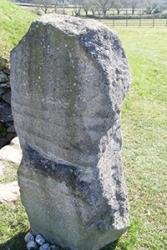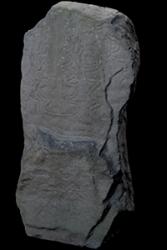Newsletters
Anglesey’s Standing stones take a leap into the digital age
Anglesey’s standing stones are set to be the subject for an exciting new 3D visual information database thanks to a computer scientist at Bangor University.
 An image of one of the inscribed stones at Bryn Celli Ddu burial chamber on Anglesey.Dr Jonathan Roberts at the University’s School of Computer Science has won a grant from the UK’s Arts & Humanities Research Council to use 3D visualisation technology.
An image of one of the inscribed stones at Bryn Celli Ddu burial chamber on Anglesey.Dr Jonathan Roberts at the University’s School of Computer Science has won a grant from the UK’s Arts & Humanities Research Council to use 3D visualisation technology.
The project will involve computer scientists working with archaeologists at both the University’s School of History, Welsh History and Archaeology, Gwynedd Archaeological Trust and academics at Aberystwyth and Manchester Metropolitan universities, to build up a visual resource of information about Anglesey’s standing stones which will be accessible to all.
The project, ‘Co-Production of alternative views of lost heritage’ was competitively selected for the Arts & Humanities Research Council Award under Digital Transformations in Community research Co-Production in the Arts and Humanities. It will use the latest technology, and there will also be a role for members of the public as amateur archaeologists and photographers. The project aim is to create an exciting high tech three dimensional information resource about Anglesey’s renowned standing stones and other archaeological sites and monuments in North Wales.
A new digital computer visualisation technique, called photogrammetry, will be used to create three dimensional representations of the standing stones, these will be ‘stitched’ together from digital images photographed and submitted by the public.
 Inscribed markings ar far clearer once the image has been rendered in 3DA selection of three dimensional representations, made by digitally combining between 3-20 images of the same standing stone, will then be 3D printed. The models will enable users to interact with a special touch surface table which will call up and display all the relevant information about that standing stone to the computer screen-like table top.
Inscribed markings ar far clearer once the image has been rendered in 3DA selection of three dimensional representations, made by digitally combining between 3-20 images of the same standing stone, will then be 3D printed. The models will enable users to interact with a special touch surface table which will call up and display all the relevant information about that standing stone to the computer screen-like table top.
Expected to be completed within 18 months, this is the second similar project between computer scientists and archaeologists at both the University and Gwynedd Archaeological Trust. The first project focussed on creating 3D images from old photos of standing stones and other prehistoric sites.
Dr Jonathan Roberts is a leading expert in visualisation at the University’s School of Computer Science. His interests lie in how information is communicated and how we can interact with data. He said:
“This project provides a great way to involve the public in work that marries new technology with Archaeology. I really hope that the project inspires enthusiasts and perhaps schools or families to get involved in photographing stones, receiving the 3D information and getting their 3d models printed.”
 An illustration showing the points at which digital images were taken before being ‘stitched together’ to make the 3D imageRaimund Karl, the University’s Professor of Archaeology & Heritage said: “This is a great way of involving people in archaeology at a very accessible level. It will allow people to become much more actively involved in the management of their heritage, and make their own choices about what of it is important to them.”
An illustration showing the points at which digital images were taken before being ‘stitched together’ to make the 3D imageRaimund Karl, the University’s Professor of Archaeology & Heritage said: “This is a great way of involving people in archaeology at a very accessible level. It will allow people to become much more actively involved in the management of their heritage, and make their own choices about what of it is important to them.”
Further details about how to get involved with the project are be available on the projects’ website heritagetogether.org .
Publication date: 19 February 2014
